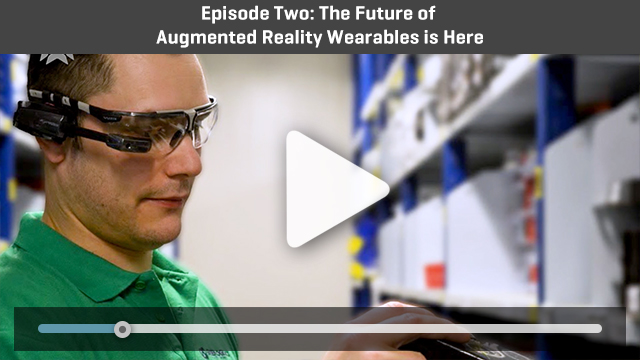MHIsolutionsmag.com—Items often need to be moved within a factory or warehouse. When workers lift and carry them manually the work is hard and subjects workers to serious risk of injury. If the items are heavy, these tasks can take multiple workers. Now there is a faster, safer way to do this work by using workstation crane systems, also known as light or enclosed track crane systems.
|  |
MHI Blog—Hurricane Harvey devastated Texas after making landfall on Friday night. The slow-moving storm left behind flattened communities and is causing historic flooding in Houston and other parts of Texas. The American Logistics Aid Network (ALAN) is assisting with relief efforts.
|
The Wall Street Journal—Trucking fleets, railroads and shipping lines are rerouting cargo and setting up alternate supply lines as Tropical Storm Harvey promises to disrupt freight traffic across southeast Texas for days.
|
Material Handling & Logistics—Hurricane Harvey’s broad swath across Texas will strongly affect over 7% of U.S. trucking, with some portion of that fraction out of operation for two weeks, according to FTR.
|


Modern Materials Handling—For all the advances in lift truck technology and fleet management, operators will always be the heart and soul of a fleet. As manufacturers and equipment purchasers place more value on that piece, the role of the operator extends from design to daily use.
|
Safety & Health—In the latest attempt to push back a federal mandate requiring commercial motor vehicle drivers to use electronic logging devices in place of paper logs to track hours of service, Rep. Brian Babin (R-TX) has proposed legislation that would delay the rule’s implementation for two years. The ELD final rule is scheduled to go into effect Dec. 18.
|
EBN—Have you ever ordered something online and then decided to return it? You’re not alone. While returns for in-store purchases average in the single digits, returns from e-commerce sales average 30%, with even higher rates in certain categories. This creates an interesting problem for both retailers and manufacturers that sell online: in addition to predicting a customer's original order, manufacturers and retailers need to be able to forecast expected returns.
|
As part of MHI view's ongoing video program, this episode focuses on The Future of Augmented Reality Wearables Is Here, Part 2.
Mobile and wearable technology is advancing exponentially for manufacturing and supply chain operations. Augmented Reality (AR) wearable technology is allowing firms to improve supply chain speed, efficiency, accuracy, training and worker satisfaction. Businesses that don't take advantage of this new technology trend may lose their competitive advantage. View the video to learn more about these important developments for digital, always-on supply chains.

|
MHIsolutionsmag.com—For the fourteenth consecutive year, MHI welcomed students and their instructors to Student Days at ProMat 2017, and the attendance was record-breaking this year. ProMat 2017 saw 97 Career & Technical Education (CTE) Program participants and 167 university- and college-level students—the largest numbers ever at the event.
MHI Blog—The 9th annual MHI Career and Technical Educators Summit occurred July 10-15, 2017 in Charlotte, NC, with a record attendance of 37 attendees from 14 different states. Attendees included instructors and program directors from high schools, technical schools, and community colleges in the area of material handling, logistics and supply chain.
|


Supply Chain Quarterly—The "Supply Chain Insights Impact!" game, developed by Supply Chain Insights and Llamasoft, simulates the sales and operations planning process.
|
Bloomberg Politics—The U.S., Mexico and Canada ended the first round of talks on a new North American Free Trade Agreement saying they’re committed to wrapping up the negotiations quickly with a far-reaching deal.
|
Supply Chain Digital—UPS has announced its embrace of virtual reality, with the company rolling out its own training software for employees using the HTC Vive at its platform.
|
Modern Materials Handling—Every company considers itself an innovator. It’s time to include materials handling leaders in that category.
|


MHI’s new Career Forum enables manufacturing and supply chain professionals to view current job postings of MHI member companies. Go to http://www.mhi.org/careers to find the perfect opportunity for you.
|
MHI Blog—The Red Cross has to track each donation very carefully because if they discover something wrong with the blood, they have to be able to find it and destroy it. But, following the consumer market, they are making that information known to the customer (donator) to connect them to the product (saving lives).
|
EBN—Consumers are becoming ever-more enamored with their gadgets and toys. Drones and home assistants are becoming more ubiquitous in our homes (and flying around our skies). However, when these machines run their course — either because they break, or a newer model comes out — is there still use for them?
|
Bookmark MHIsolutionsmag.com to gain quick access to any and all MHI media and news information. MHI Solutions magazine holds all issues of MHI Solutions and Newswire and Industry News eNewsletters, MHI’s Twitter, Facebook and Linkedin social media accounts as well as links to membership information, events, MHI view and the learning center.
It’s easy to find a topic you’re looking for with our drop down menu of categories: Current Features, Industry Trends, Global Trends, Technology, Sustainability, Human Resources, Education, Economic Market Update, and Solutions Spotlight.
Click here to save or bookmark today! For information about advertising, contact Rob Shafer at rshafer@naylor.com.
|
Material Handling & Logistics—Automation may drive productivity gains and export competitiveness, but the rising use of robots also threatens to exacerbate domestic income inequality, undermining consumption.
|
Supply Chain Brain—Manufacturing workers are retiring in droves, with an estimated 2.7 million jobs being vacated by 2025. At the same time, the growth and advancement of the industry is expected to create an additional 700,000 jobs for skilled manufacturing employees over the next decade. As a result, manufacturers are scrambling to fill this knowledge and skills deficit with the next generation of workers - millennials.
|

|
| |
|
